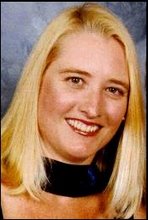PROBLEM: You’ve been given the task of creating a sales presentation for a new product that will become the company standard. You’re competing with other sales managers for a promotion, and it’s clear that whoever designs the best presentation will get that promotion.
SOLUTION: Sales presentations are the easiest kind of presentation to develop, because unlike many other types of presentations, the goal is always the same; to sell more of the product. Unfortunately, many salespeople begin by simply making a list of all of the attributes of their product, then run down that list during their presentation ("This product is faster, smarter, cheaper than the competitors.") Simply listing the attributes isn’t enough, because it assumes the buyer will automatically know what the advantages of those attributes are, an assumption that is sure to lose sales.
By all means, start with such a list, but then take each attribute to the next level; determine what NEEDS a potential buyer has, and how each of the attributes of this new product can satisfy those needs. For example, if you’re selling high-end cookware, rather than just talk about how much faster your pans will heat up, point out how much time it will save a busy cook during meal preparation. If your product is smarter, describe how using it will give them an edge over their competitors who haven’t yet upgraded. If your product is cheaper, make it clear how significant their savings will be, and how useful those savings will be for expanding their business or making their personal lives more comfortable and enjoyable.
Once you have made a list of attributes and the corresponding needs of the buyer that will be satisfied by each of them, the next critical element is to develop a strong opening for each attribute. Never begin with a question, because: 1) you may not get the answer you want, 2) it sounds like you haven’t done your homework and are looking for guidance from your buyer, and 3) it’s too hoaky, and you’ll lose credibility. Never start with an apology or joke either, because they will also diminish your authority.
The best way to start is to make an irrefutable statement with which the potential buyer can agree. These can include; 1) The Historical Approach-"Since Man discovered fire, we’ve been looking for better ways to cook our meals." 2) The Concerned Approach-"Teflon pans have recently been indicated in the development of cancer." 3) The Truth as We Know It-"The last thing that touches our food before it goes on a plate is the pan it is cooked in." and 4) Quotations-"It’s been said that the way to a man’s heart is through his stomach." Choose the attribute that will have the most impact at the beginning of your presentation, and bring the others in whenever you introduce a new attribute.
The reason you start with an irrefutable opening statement is so the potential buyer will be compelled to agree with you, which is exactly what you want them to do. The more the buyer agrees with you, the easier the final sale will be. Therefore, your presentation of each attribute should begin with an irrefutable statement, move to a description of that attribute, and end with how that attribute will satisfy a particular need of the buyer. Watch your buyer! You should be able to get them nodding at each irrefutable statement, as well as each time you demonstrate how an attribute will satisfy their need. If they don’t nod, they haven’t seen the advantage to them yet, and you may have to adjust your approach a bit, because you’re trying to satisfy a need they either don’t really have or don’t think they have. If it’s the former, move on to another attribute, if it’s the latter, try again from another angle.
Once you’ve completed your description of each attribute and how it will satisfy the needs of your prospective buyer, now is the time to launch into the proverbial "close." This is the most misunderstood areas of making a sales presentation. Contrary to convention wisdom, it is not a time of cleverly outmaneuvering objections and employing arm-twisting techniques, nor is it a time to be avoided, letting the presentation simply peter out, as many (unsuccessful) salespeople prefer to do. Rather, consider it a Q&A period, an opportunity to teach the buyer even more about the product, and possibly even learn from your buyer how your product might be able to satisfy needs you never thought of.
Begin your close by simply asking, "What questions may I answer for you?" Now let them do the talking. Don’t expect them to admit their real objections at first, usually the third or fourth objection will get closer to the real reason they might be hesitating. Again, make your priority the satisfaction of THEIR needs, because ultimately, that’s the only reason they’ll buy your product.
Be well-prepared for the moment when the buyer says "Sign me up!" This may seem obvious, but there are many instances when a salesperson seems surprised and flustered when that moment comes, and that alone could destroy your buyer’s confidence in their decision to buy the product, sometimes enough to instantly change their minds. The customer giving his final "Yes" is the REAL close!
By keeping in mind that your most important job is to satisfy the needs of the buyer, there is no question that you will eventually reach the point of final sale. By exhibiting that kind of confidence in your product, you will set the standard for the company’s sales presentation, win that promotion, and ultimately make lots more sales!
Wednesday, June 13, 2007
Subscribe to:
Post Comments (Atom)


No comments:
Post a Comment